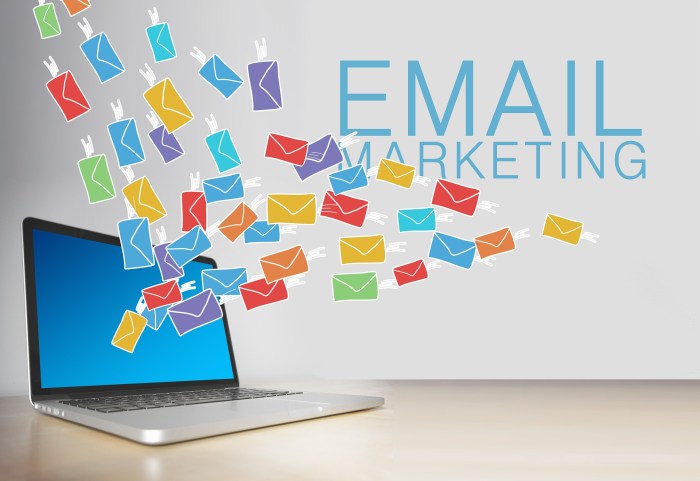Email Marketing Campaigns, a crucial tool for businesses, are explored in this hip overview that dives into the key components and strategies for success.
From defining the goals to measuring performance, this guide covers it all in a cool, high school style.
Introduction to Email Marketing Campaigns
Email marketing campaigns are a crucial tool for businesses to reach their target audience, promote products or services, and ultimately drive sales. By sending targeted emails to subscribers, businesses can build relationships, increase brand awareness, and encourage customer loyalty.
Primary Goals of Email Marketing Campaigns
- Generating leads and acquiring new customers
- Increasing sales and revenue
- Building customer loyalty and retention
- Driving website traffic and engagement
Benefits of Running Successful Email Marketing Campaigns
- Cost-effective compared to traditional marketing methods
- Highly measurable with metrics like open rates and click-through rates
- Personalization options to tailor messages to individual recipients
- Ability to reach a large audience instantly
Components of an Email Marketing Campaign

Email marketing campaigns consist of various key components that contribute to their success. These components include the subject line, content, call-to-action, audience segmentation, and personalization.
Subject Line
The subject line is the first thing recipients see when they receive an email. It should be attention-grabbing, concise, and relevant to encourage recipients to open the email.
Content
The content of an email should be engaging, informative, and tailored to the target audience. It should provide value to the recipients and entice them to take action.
Call-to-Action
A call-to-action is a clear and compelling message that prompts recipients to perform a specific action, such as making a purchase, signing up for a newsletter, or visiting a website. It should be prominently displayed in the email.
Audience Segmentation
Audience segmentation involves dividing the target audience into smaller groups based on factors such as demographics, behavior, and preferences. This allows marketers to send more personalized and relevant emails to different segments, increasing the chances of engagement and conversion.
Personalization
Personalization involves customizing the content of an email based on the recipient’s preferences, past interactions, and purchase history. By personalizing emails, marketers can create a more personalized experience for recipients, leading to higher open and click-through rates.
Designing Effective Email Marketing Campaigns
Creating visually appealing email templates is crucial for grabbing the attention of your audience. Make sure to use eye-catching colors, engaging images, and clear fonts to make your emails visually appealing and easy to read.
Responsive design is essential in email marketing campaigns as it ensures that your emails are optimized for various devices such as desktops, laptops, tablets, and smartphones. By using responsive design, you can provide a seamless user experience regardless of the device your audience is using to view your emails.
Best practices for optimizing email content for various devices include keeping your email design simple and clean, using a single column layout, optimizing images for fast loading times, and testing your emails on different devices to ensure they display correctly.
Tips for Creating Visually Appealing Email Templates
- Use a clean and simple design with plenty of white space.
- Choose a color scheme that reflects your brand and is visually appealing.
- Incorporate engaging images and graphics to capture the reader’s attention.
- Use a clear and easy-to-read font for your text content.
Significance of Responsive Design in Email Marketing Campaigns
- Ensures that your emails are optimized for different devices.
- Provides a seamless user experience across various platforms.
- Increases the chances of your emails being read and engaged with.
Best Practices for Optimizing Email Content for Various Devices
- Keep the design simple and clean.
- Use a single column layout for easy readability.
- Optimize images for fast loading times.
- Test your emails on different devices to ensure proper display.
Implementing Email Marketing Strategies
When it comes to implementing email marketing strategies, there are key aspects to consider in order to maximize the effectiveness of your campaigns.
Types of Email Marketing Campaigns
There are different types of email marketing campaigns that businesses can utilize to engage with their audience:
- Promotional Campaigns: These emails are focused on driving sales by promoting products or services with special offers or discounts.
- Informational Campaigns: These emails provide valuable content, updates, or news to educate and inform subscribers.
- Transactional Campaigns: These emails are triggered by specific actions taken by the recipient, such as purchase confirmations or order updates.
Building an Email List
Building a quality email list is crucial for the success of your email marketing campaigns. Here are some insights on how to effectively grow your email list:
- Create valuable content offers or lead magnets to entice visitors to subscribe.
- Utilize pop-up forms, landing pages, and social media to capture email addresses.
- Segment your email list based on demographics, interests, or purchase behavior for targeted campaigns.
Importance of A/B Testing
A/B testing is an essential practice in refining email marketing strategies and improving campaign performance. By testing different elements of your emails, you can gather valuable insights on what resonates best with your audience. Some key areas to focus on include:
- Subject lines: Test different subject lines to see which ones result in higher open rates.
- Call-to-action: Experiment with different CTAs to determine which drives more clicks and conversions.
- Design elements: Test variations in email design, layout, and visuals to optimize engagement.
Measuring Email Marketing Campaign Performance

When it comes to measuring the success of your email marketing campaigns, there are key metrics that you need to track to see how well your emails are performing. These metrics include open rates, click-through rates, and conversion rates, which provide valuable insights into the effectiveness of your campaigns.
Key Metrics to Track
- Open Rates: This metric shows the percentage of recipients who opened your email. A high open rate indicates that your subject line was engaging and enticing enough for people to click and read your email.
- Click-Through Rates: The click-through rate measures the percentage of recipients who clicked on a link or call-to-action within your email. This metric helps determine the level of interest and engagement your content generates.
- Conversion Rates: Conversion rates track the percentage of recipients who completed a desired action after clicking on a link in your email, such as making a purchase or signing up for a newsletter. This metric directly correlates with the effectiveness of your email in driving desired outcomes.
Analyzing and Interpreting Data, Email Marketing Campaigns
- Utilize email marketing software to collect and analyze data on key metrics.
- Compare performance metrics across different campaigns to identify trends and patterns.
- Segment your audience to understand how different groups respond to your emails.
- Monitor the performance of individual email components, such as subject lines, call-to-action buttons, and visuals, to optimize future campaigns.
Optimizing Campaigns Based on Performance Metrics
- Use A/B testing to experiment with different elements and strategies to improve performance.
- Implement personalized content based on recipient behavior and preferences.
- Regularly clean your email list to remove inactive subscribers and improve engagement rates.
- Continuously analyze and adjust your campaigns based on performance data to achieve better results over time.





